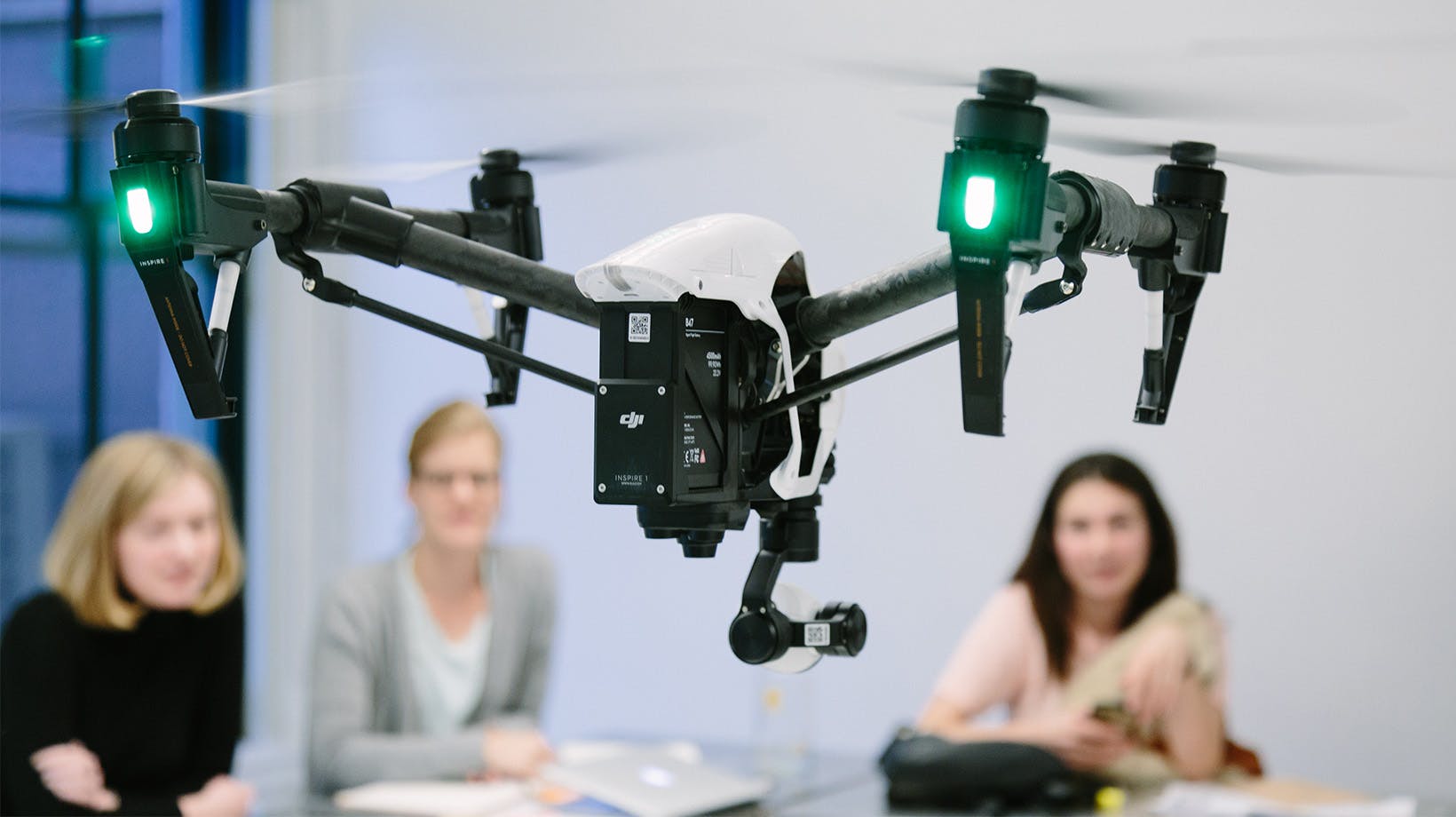
Objects are as virtuous as we make them. The difference between a kitchen knife lovingly slicing a confetti cake on Memorial Day and a discarded murder weapon is human intention. At Parsons School of Design, where new technologies are only moral extensions
of humans, students see through world problems to groundbreaking technological solutions.
Parsons faculty member and Design and Technology alum Mehdi Salehi can build a drone from scratch. He does so often and in many global contexts. He flies them, surveys topographies with their built-in cameras, and tracks beach erosion levels, lamenting
clear evidence of glacial melting. Kristen Kersh, Salehi’s
Good Drones business partner and fellow Parsons graduate, stands close by, tracking pedestrians or, more accurately, their reactions to drones. The tension is palpable.
Good
Drones is a series of humane drone-centric course offerings at Parsons and nonprofit initiatives that focus on technological solutions. Through their various projects, co-founders Salehi and Kersh hope to effect a positive shift in popular opinion
about drones—a tall order, as the public’s anxieties are very much rooted in fact. For better or worse, drones have been used primarily by government agencies for war. But human intentions, not drones themselves, dictate how drones are used, as Salehi
and Kersh are well aware.
With diverse backgrounds that include undergraduate degrees in neuroscience and education and in
Design and Technology from Parsons, the Good Drones team uses drones for collaborative curriculum and humanitarian missions. Their groundbreaking drone-based design courses function as incubators for tech
solutions. “We don’t practice human-centered design as much as problem-centered design,” says Kersh. The pair solve problems, and the results have been illuminating. From advancing sustainability to unearthing history and saving lives, their
drones are doing good in the world.
In the courses Drones and the Environment and Drones and the Third Dimension, Kersh and Salehi instruct students on how to use drones as 3D scanning devices to survey large landmasses and track the lasting effects of climate change, war, and a host of
other seismic shifts. The use of drones as scanners is significantly more cost effective and sustainable—and less dangerous—than that of more typically used human-occupied helicopters.
Students in Drones for Dig Silk Road become archivists along with their drones. Using 3D scanning technology, they archive endangered historical monuments in nations along the Silk Road (Afghanistan, Syria, and Iraq) in order to inform the public and
spark reconstruction. They keep records of damage to and demolition of structures like the towering Buddhas of Bamiyan, rare Afghan statues destroyed by the Taliban.
Another Good Drones mission is monitoring refugee migrations in real time. Kersh and Salehi hope to save lives by notifying rescue teams of emergencies along migratory routes without delay. Drones can also be used to drop first aid kits to refugees and
display short messages in various languages. The route between Turkey and Greece is of particular interest to Good Drones because of current migrations from war-torn Syria; it is also particularly poignant for Salehi, who, once a refugee himself,
rafted across the Mediterranean to flee a war-torn Afghanistan—his home.
Good Drones’ ethical, critical approach to technology has brought the project awards from
New Challenge, the William Hearst Foundation, and the Michael Kalil Endowment for Smart Design.
Kersh and Salehi say they’ll move forward continuing to ask how technologies can accomplish what may seem impossible. They’re currently ideating and developing new drone accessories and solutions, including drone launch pads, communication drones, clean
air detection systems for China, shark trackers for the beach, and drones that help lead blind people. And Salehi hopes one day to use a drone to plant the very first Afghan flag atop Mount Everest.
The New School, in its dedication to thoughtful, humane design, is a force of ethical innovation—and infinite possibilities. Be
a Force of New.
See All the Stories